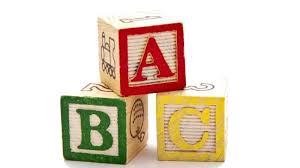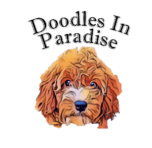How to Train Your Puppy

There are many Dog training systems out there, but nearly all of them employ a method called positive-reinforcement. It’s the method we recommend and technique used in all of our training articles. The theory grounding it is pretty simple. Your dog is constantly creating associations between events, so you develop positive associations with the preferred behaviors by rewarding them immediately after. With this method punishment is never used. Instead, their behavior is guided by presenting or withholding reward. But before we get into the details of this method, you must understand a few foundational points.
- Your Dog is ALWAYS Learning
This is particularly important if you’re training a puppy, as the first 16 weeks form the basis of all his behaviors. Active training sessions with your dog may be 10-30min of time wherein you teach a very specific behavior, but at all times your dog is forming associations. Because of this, there are really two different senses of training that I refer to as active and passive training. Active training refers to direct training, where your dog learns something you are specifically teaching, and is governed by the training sessions you create. Passive training refers to the things your dog learns at all other times, and is governed by the environment you create. Now, there’s no bright line between the two types, the distinction is merely a conceptual tool. Active training over time may become more like passive training (such as teaching your dog to be calm for meals), and passive training facilitates active training so much that you may think of it as simply part of active training (a good routine sets your dogs expectations, and helps with actively house or boundary training your dog). But I hope that the distinction will help you to consider the totality of your effort to train your dog, beyond just the training sessions. You really need to consider how your actions and environment operate to either constantly promote the right behavior and demote the wrong behavior.
2. Routine and consistency are impossible to undervalue
Some of the most important behaviors you want your dog to learn are developed mainly by routine and consistency. House training for example, largely boils down to routine (when they eat/drink, when they go outside) to control when they need to use the bathroom and then consistently taking them and rewarding them so they learn. In fact, if you are inconsistent about taking your puppy to the bathroom and rewarding them for success, your dog may take a very long time to house train. Dogs thrive with structure, and without it they may learn all the things you hoped they wouldn’t. (see misbehaviors)
3. Analyze the training process
Be conscious about how the training is going. Is your dog responding well and learning? If it doesn’t seem to be working after some time of consistent effort, maybe a different approach should be taken, or perhaps something is wrong with the current approach; does the reward seem to have much value to your dog? Are you in the right environment? Does your dog seem interested and engaged? Be consistent, be patient, but be aware that you may need to change something if your dog doesn’t seem to be progressing.
The training process
To get started, you first need to teach your dog that paying attention to you, pays off. This can be done in conjunction with teaching them their name, recall (coming when called), and to follow food. These exercises will also develop the meaning of the reward signal
let’s look at the basic process for active training sessions with your dog. It can be summarized by 3 steps: command, connect, and reward
Command
This will be cue that prompts a behavior. It can be a sound, a gesture, or a word like “Sit”
Connect
This refers to the method of getting your dog to perform the behavior, such as luring them to a position, hiding a treat under a matt to wipe off their paws, or even simply waiting for the correct behavior
Reward
Reward your dog, at the right time, so they form the association with the command, the behavior and the reward. A reward signal is given with the reward, every single time.
Whatever the trick or behavior you are training for you will use these 3 steps. Timing is everything. Dog’s learn within 1 second. Early on, it is imperative that you give the reward signal precisely at the moment they’re successful, and reward them within 1 second of their success.
The 3 steps are sequential, and it’s important that apply them consistently, and that you don’t mix them, or the training may take longer. To understand what I mean, let’s look at a few examples:
Example 1: a beginner trainer repeats the word sit over and over while trying to lure their dog into a sit. But by doing so, they have a) desensitized the dog to the word, so it doesn’t stand out as a cue for anything b) imprecisely linked the word to any specific behavior
Example 2: A beginner trainer successfully lures the dog into a sit, and gives the reward, and then the signal after they have already given the treat. Doing this fails to teach the dog that reward signal means the behavior is correct and the reward might now follow.
Second Stage
Once the dog is reliably performing the behavior with the connecting method, it’s time to start phasing out the connector. So if the connection is a lure, you begin to fade the lure out, until the dog assumes the position with the command alone. What and how will depend on the connection used for the behavior. It’s also time to change the location, and teach the dog to perform the behavior no matter where they are when the command is given.
Do's and Don'ts of training
DO
- Employ very specific commands or cues and a single reward signal consistently
- Reward your dog at the right time
- Patiently repeat the training sessions, keeping them short and sweet, until mastery is achieved
- Feed your dog at specific times on a routine. No open food bowls!
- Make sure everyone in the dogs life is on the same page. It doesn’t work if each human allows and expects different things when a dog is learning
DON'T
- Use commands before they are learned, or when they are not intended to be followed. You want the word to have a very clear meaning and expectation.
- Feed your dog treats excessively, and devalue their worth.
- Jump up the difficulty too quickly; even when the dog is performing the behavior well, repetition is vital to really secure their understanding.
- Waste natural training opportunities, such as meal times, especially early on.
- Give up! You can do it, and your puppy deserves to learn the tools for a successful life with humans and the bonding time that comes with developing them.

